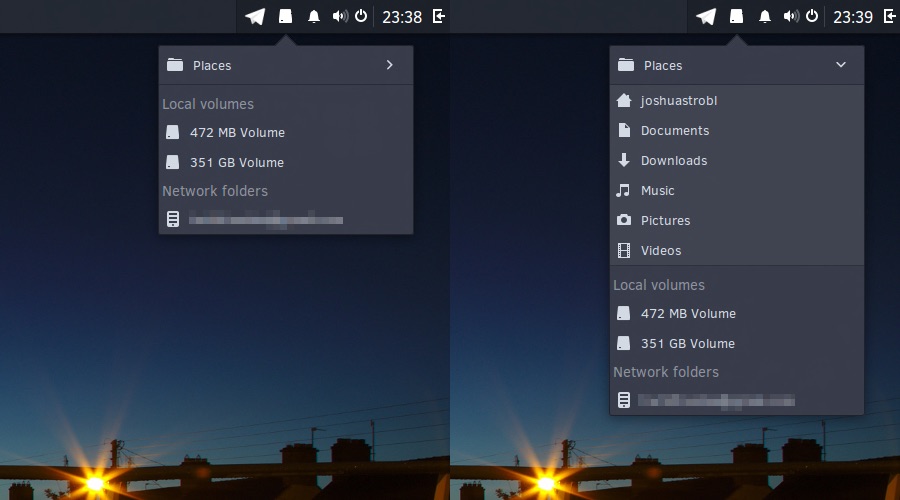 A new version of the open-source Budgie desktop environment has been released.
A new version of the open-source Budgie desktop environment has been released.
Budgie 10.2.8 ships in Solus 1.2.1, the latest release of the Solus project’s Linux distribution. The updated desktop will be packaged for other Linux distributions, including Ubuntu, in the coming weeks.
Along with IBUS (Intelligent Input Bus) support, Budgie 10.2.8 introduces a few new or improved panel applets, including a new ‘Places Indicator‘ for “quick access to a User’s Documents, Downloads, Music, etc. [and] the ability to open, mount, and unmount removable media and network shares.”
We’ve written about some similar-ish indicator applets for the Ubuntu desktop this month, so the addition of Places in Budgie is a rather timely addition!

The volume applet now has a popover, designed to make adjusting volume easier for those who don’t use a mouse or mouse with scroll wheel.
On the topic of volume, the On-Screen Displays (OSD) for Brightness and Sound in Budgie have been made a little larger (and thus more noticeable on large screens). The increased size means they also benefit from higher resolution iconography.
The Raven sidebar nabs some neat fallback icons designed by the creator of the Arc GTK theme, ~horst3180. I should point out that these icons are only used when certain named icons are missing from whichever GTK theme you’re using, as happens when using Adwaita.
Among various applet and task-list improvements, including the ability to rearrange apps pinned to the panel by click-dragging on them, a similar interaction model to that found on desktop docks apps like Plank.
You can see a full commit log for this release of Budgie on GitHub, where you can also download Budgie source code to compile it for yourself.
If you’re running Ubuntu 16.10 you can install an older Budgie release straight from the Ubuntu archives, no PPA required.
